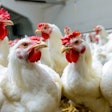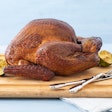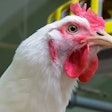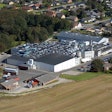Waterers after weaning
This year's 34th annual Allen D. Leman swine conference arranged by the University of Minnesota, USA, was dedicated to the memory of Dr Carlos Pijoan (1945-2007), founding director of the Swine Disease Eradication Center at the university. The 2007 conference details are at www.cvm.umn.edu/outreach/events. One paper was on watering. The preferences of young piglets for different styles of drinkers', by a combined Canadian team from the Lennoxville swine research centre and the University of Guelph, gave an update from studies that had previously compared nipples, float bowls and push-plate watering bowls for early-weaned pigs. In that instance the nipples gave the most wastage and the float bowls the lowest intake. Push-plate bowls meant less water use than with nipples while being associated with a higher intake of feed. The new tests checked whether piglets weaned at 20 days or 28 days old preferred a particular drinker type from the 3 options mentioned. Soiling of the water in a float bowl seemed to deter them from using it. More water was wasted from the nipple drinker. Measurements for the 28-day weaners showed a wastage from nipples of more than 1 litre per pig daily over 10 days with an uptake of 799ml/pig/day, whereas for push-plate bowls the figure on wastage was just 22ml alongside a daily consumption of 238ml.
Rating the main concerns on health
Some results from a study of pig health challenges in the USA can be found at www.animalagriculture.org. It gives access to an item in the summer 2007 Swine Health Report from the National Institute for Animal Agriculture, in which veterinarians attached to 19 US companies producing more than 150 000 pigs/year were asked for their perceptions of the productivity and economic losses caused by major diseases. The study, underwritten by Merial, was headed by Derald Holtkamp DVM of Iowa State University. He describes majority responses that rated PRRS as the most challenging to health in the breeding herd and nursery, while swine influenza was named the most frequent health challenge in finishing units. The next most frequently cited concerns in the breeding herd were clostridial diseases and rotavirus acting alone or with E. coli. Both Haemophilus parasuis and Streptococcus suis were cited as a concern in the nursery for all but one of the companies interviewed. More than half the companies responding also included Mycoplasma hypneumoniae, Pasteurella multocida and Bordetella bronchiseptica as nursery concerns. Porcine circovirus type 2 (PCV2) was a relatively infrequent challenger in US finishing houses at the time of the study in 2005/06, Dr Holtkamp noted. When the combination occurred, however, PRRS and PCV2 viruses acting together were considered responsible for greater productivity losses on average than from any other pathogens. PIGI

















